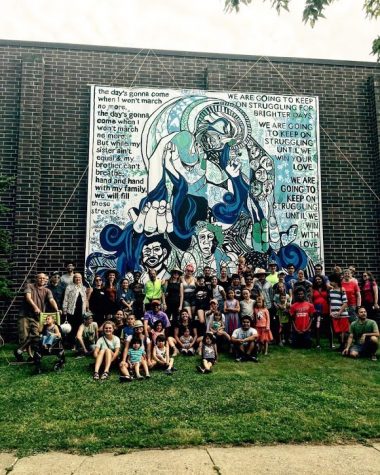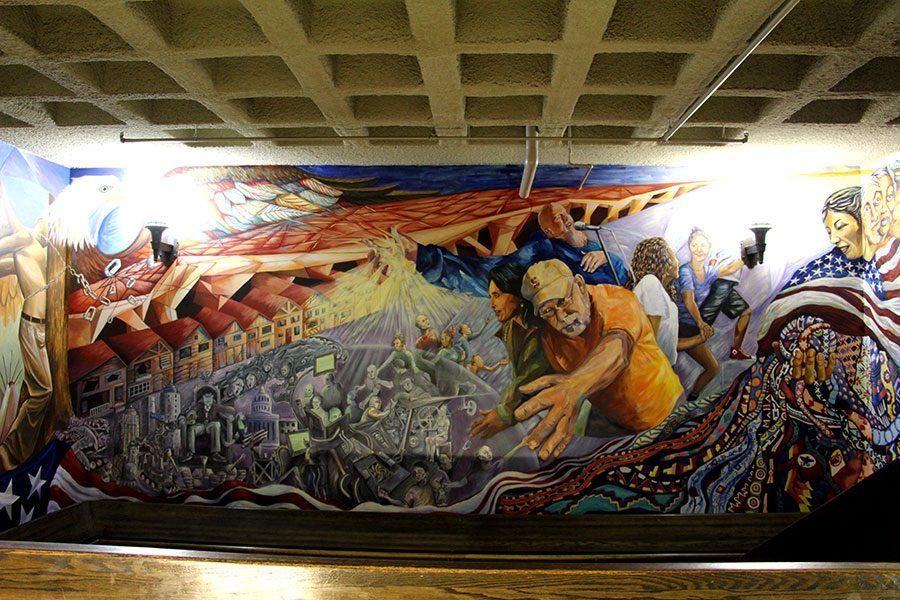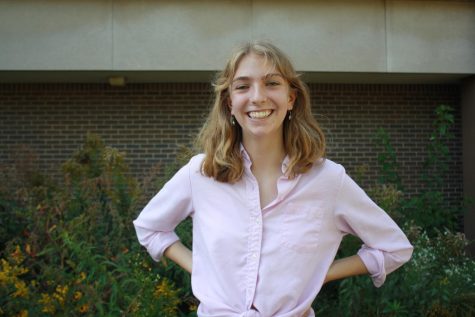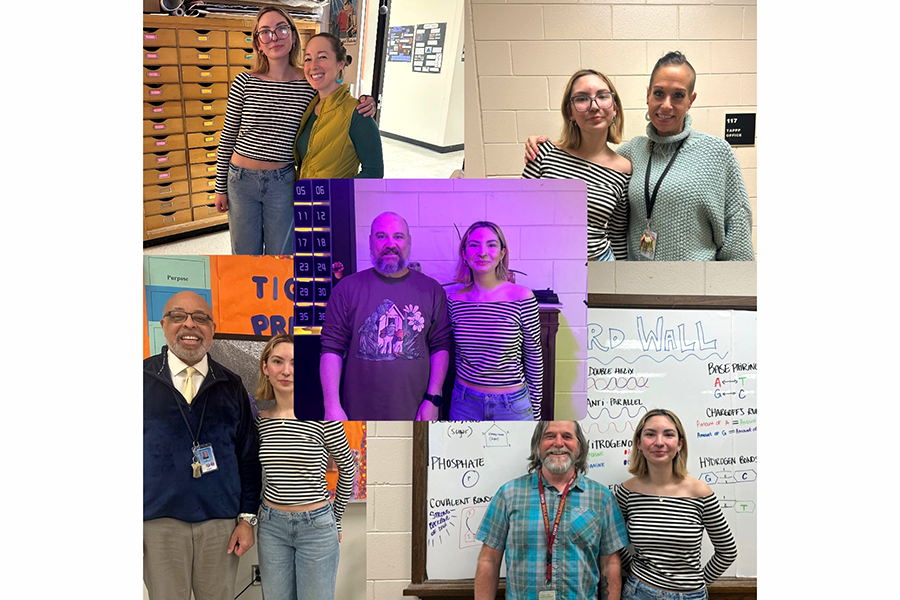It isn’t just paint on the wall: Mural mends community
October 27, 2016
How do you mend a damaged wall? You paint over it. You paint over the stains. You paint over the graffiti. You cover up the bad with good. Now how do you mend a damaged community? In a similar way, you can use paint. Through murals, people can communicate feelings, emotions, or political opinions. South alumni Greta McClain, graduated in 2002, and Lamia Abukhadra, graduated 2014, do this on the regular, using murals and other visual art forms to bring communities together. More recently the two were able to bring much needed healing to a Saint Paul school, JJ Hill elementary, after the recent death of staff member Philando Castile.
McClain and Abukhadra met in 2012 with the creation of South High’s Social Justice mural: you may recognize it as the mural that overlooks the lunchroom. Along with the help of former Ceramics teacher Denny Sponsler, McClain led a group of students, including 15 year old Abukhadra, in the creation of the mural, teaching them the “all kinds of mural techniques I’ve collected,” she explained. McClain was able to recognize the effort and creativity Abukhadra put into her visual creations, and offered her an internship at Good Space Murals, an organization that “promotes community development through the creation of works of art. The two have been working alongside each other ever since.
McClain and Abukhadra both shared very strong feelings when it came to the murder of Philando Castile. Abukhadra describes not being able to watch the video in which Saint Paul local, Philando Castile, was shot four times and killed by Falcon Heights police officer during a traffic stop: “I read what happened because I was too sick to my stomach to actually watch the video,” mentioning that “Minneapolis and Saint Paul are known for having racial bias in their policing.”
McClain knew right away she wanted to create a mural in reaction to the shooting. She describes talking to fellow mural artist Josh Sarantitis, and mosaic artist Lorri Green who both had children who attended JJ Hill elementary where Castile worked, the weekend after his murder. Claiming that the shooting was getting a “nationwide response,” and that “this is what we do this is the work that we do, this was our moment,” and that the mural was an “immediate need.”
Abukhadra explained this immediate need, stating “it was kind of a flurry of just like we have this horrible thing that happened, Greta was out of town but she called me and was like ‘do you wanna help me do an impromptu mural in like four days’, and we just started dropped everything else and started planning.”
The two were familiar working with community members to create community murals: “When you create a mural, that [wall] becomes the spaces’ wall, the neighborhoods wall,” McClain explained. “[it becomes] a vehicle to express community dream.” And while they both sketched out and planned the format of the mural, they encouraged those who knew Castile – students, family members, local police officers, and other community members – to come help out. As McClain put it, “[it gives] people a chance to rebel, grieve, mourn.” Many community members did just that. All were welcome to come paint or contribute to the space in some way. All in order to bridge a community that had lost a memb

er, and as McClain puts it to allow for “Kids kind of waking up to the space they’re inhabiting.”
Abukhadra describes, “I know like a lot of kids came who knew philando and loved speaking to him, because he worked at the lunchroom, so that was really touching.”
Principal of JJ Hill elementary, Fatima Lawson agreed the mural was beneficial to benefiting the school community, agreeing that Philando, “He meant a lot to our students and community, and his service to the students was well appreciated.”
The mural which centers around an image of a crying mother holding her child, surrounded by the lyrics of Hand in Hand, and a quote by black panther Emily Douglas, was “left blank for people to put in drawings or little words,” as Abukhadra explained. “We decided to leave a lot of blank space to be filled with any patterns or you know thoughts or prayers that you have about philando or about Black Lives Matter”, giving each community member a chance to heal in their own unique artistic way.
Due to space issues at JJ hill elementary, and Saint Paul Public Schools rule against hanging murals on the outside of buildings, the mural was taken down. Principal Fatima Lawson mentions “ It was remounted in the cafeteria for the Peace Day celebration in memory of and on behalf of Mr. Phil,” but Abukhadra is adamant in her disappointment saying “It’s just sad to see the place where philando was loved and worked isn’t going to have like this really cool memorial.” McClain was happy to announce they are in search for a more public and “permanent home.”
While the Saint Paul, and JJ Hill community will never be able to completely fill the gaping hole left by the death of Philando Castile, Greta McClain and Lamia Abukhadra were able to provide community healing through paint, art, and love. The Emily Douglas quote reads, “We are going to keep on struggling for brighter days. We are going to keep on struggling until we win your love. We are going to keep on struggling until we win with love.”






